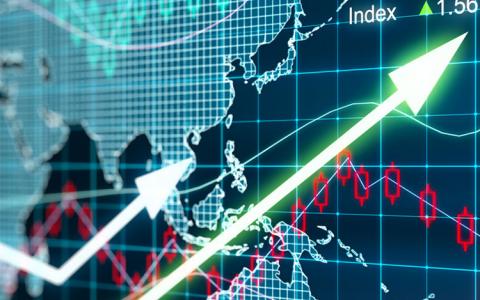
With the NASDA trading at more than twice its dot-com bubble peak of 5,048 (March 10, 2020), the Wall Street Journal asks whether stocks are ‘Irrationally Exuberant’ as they were in the late 1990s.
Based on five indicators tracked by two finance professors, the answer is no.
So what? Continue to make regular investments in an S&P 500 stock index. Or if you’re feeling more adventurous, buy stocks in solid companies that have enjoyed a surge in demand due to the pandemic.
What Makes Stocks ‘Irrationally Exuberant’?
In December 1996, Alan Greenspan asked: ”How do we know when irrational exuberance has unduly escalated asset values, which then become subject to unexpected and prolonged contractions as they have in Japan over the past decade?”
Greenspan’s question was motivated by research from Yale professor Robert Shiller who later won a Nobel Prize in part for his work on how to measure irrational exuberance.
Shiller based his Price-Earnings ratio on average inflation-adjusted earnings from the previous 10 years — dubbed the Cyclically Adjusted PE Ratio (CAPE Ratio). And a look at Shiller’s PE Ratio suggests two interesting findings for today’s investors:
- It’s hard to use valuations as a practical investing tool. In December 1996, when Greenspan gave his speech, the Shiller PE ratio was about 28 — stocks did not collapse until figure hit 43 in March 2000 — over three years after Greenspan’s speech. That time lag and the lack of specificity about the valuation level that marks a sell signal make it difficult to use Shiller PE to make trading decisions.
- Based on Shiller’s PE, it may be too soon to panic now. Currently the Shiller PE ratio is about 29 — far short of where they peaked when the NASDAQ collapsed in 2000 — after which the NASDAQ fell 78%. If you agree that Shiller’s PE is worth looking at, stocks have further to run before it’s time to sell.
In 2000, two finance professors — Harvard Business School’s Malcolm Baker and New York University’s Jeffrey Wurgler — published a study that identified five variables that compare investor sentiment at different points in time and relate them to stock performance, noted the Journal.
Based on these indicators, stocks are not close to where they were before the NASDAQ bubble burst. How so?
- Tepid IPO market. The first variable the professors used was the number of IPOs. We currently have very slow IPO market — in 1999, there were 476 IPOs — only 44 so far in 2020.
- Relatively low first day IPO pop. In 1999 IPOs’ average first-day rise was 71% — in 2020 the average is a less robust 34%.
- Low use of equity. The finance professors thought corporate use of equity versus debt was an indicator of irrational exuberance. By that standard, companies are less exuberant than in 1999 — back then the equity proportion was 18% — so far this year it’s 7.5%.
- Low valuation of non-dividend paying stocks. The study coauthors thought that in irrationally exuberant markets, valuations of non-dividend paying stocks would be higher than those of dividend-paying companies. That’s because fast-growing technology companies tend not to pay dividends. in 2020, however, “dividend payers sport an average price-to-book ratio that is 44% higher than for the typical nonpayer,” wrote the Journal.
- High closed-end fund discount. Baker and Wurgler reasoned that in times of irrational exuberance, the per share price of a closed-end funds — which have a fixed number of shares — would trade at a smaller discount to their per-share net asset value. Ryan Paylor, a portfolio manager with Thomas J. Herzfeld Advisors, told the Journal that the current discount is “historically deep [and closed-end fund investors] are leaning more towards fear than greed.”
Market Structure Has Changed in the Last Two Decades
This study was conducted based on trying to make sense of what happened in the dot-com crash. But I would be cautious about applying the conclusions to today’s market.
For one thing, I do not think it’s possible to predict where stock prices will go. Although stocks rise and fall every quarter depending upon whether they beat analysts’ revenue and earnings expectations and raise their guidance. This is not very useful unless you can figure out what the company is going to report ahead of the market.
Most importantly, the structure of the market has changed — now machines rule the roost. According to the Economist, “Since [the 1980s] the role humans play in trading has diminished rapidly. In their place have come computers, algorithms and passive managers—institutions which offer an index fund that holds a basket of shares to match the return of the stockmarket, or sectors of it, rather than trying to beat it — [in August 2019] for the first time, the pot of passive equity assets [Morningstar] measures, at $4.3trn, exceeded that run by humans.”
The machines do not have the kind of sentiment that these professors tried to measure. Instead they consist of strings of logic that make buy and sell decisions on chains of if-then statements. These decision rules are opaque to analysts and I’d guess they are different, they compete with each other, and they keep changing.
You could do worse than forgetting about trying to time the market and buy into low fee index funds every month.
This article originally appeared on Forbes.



